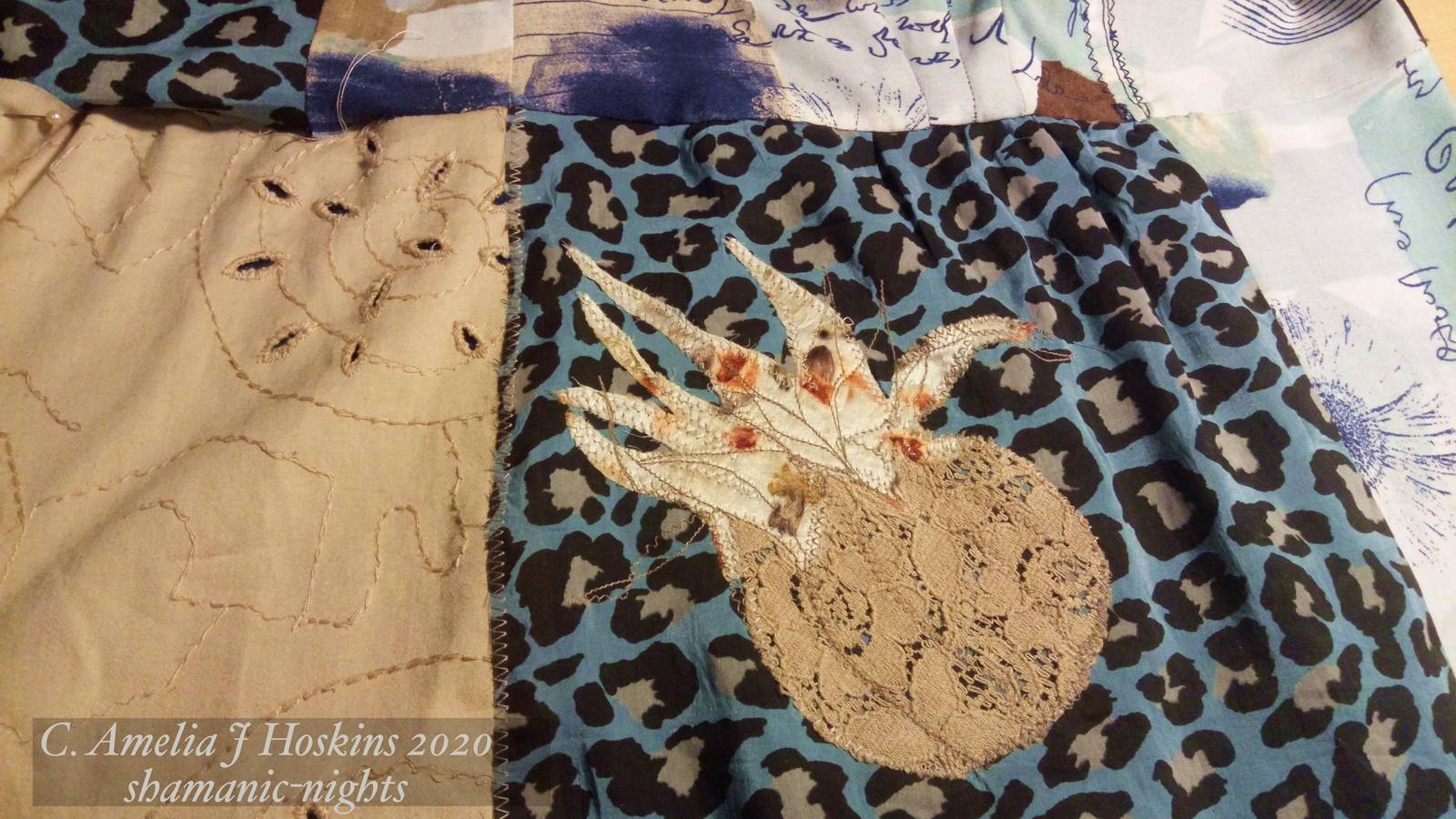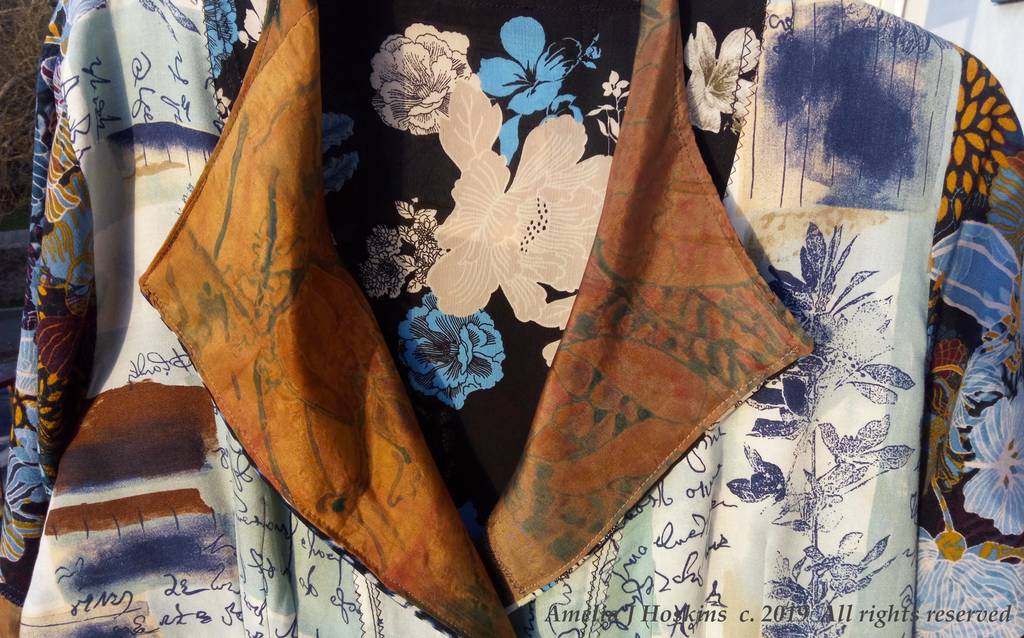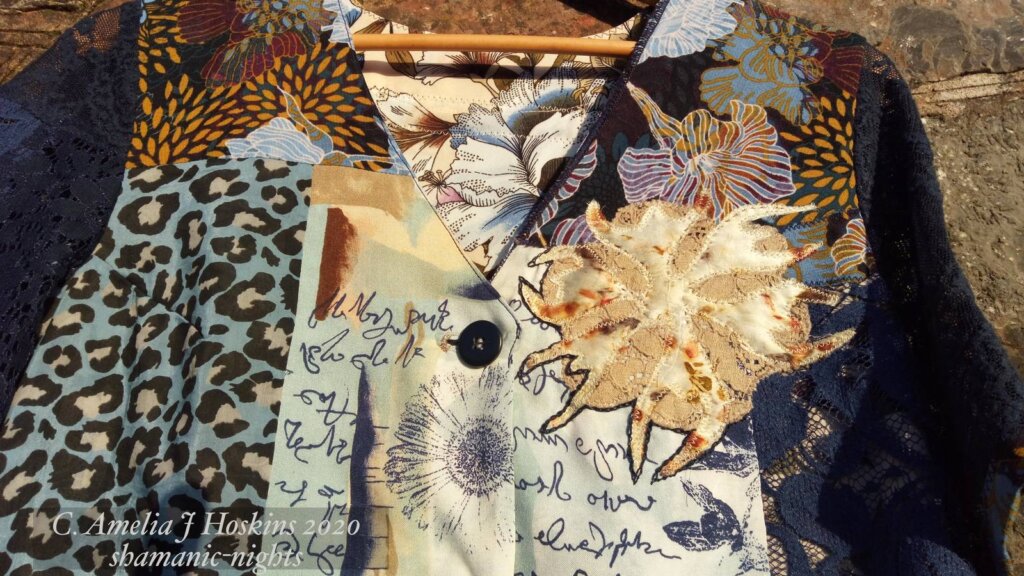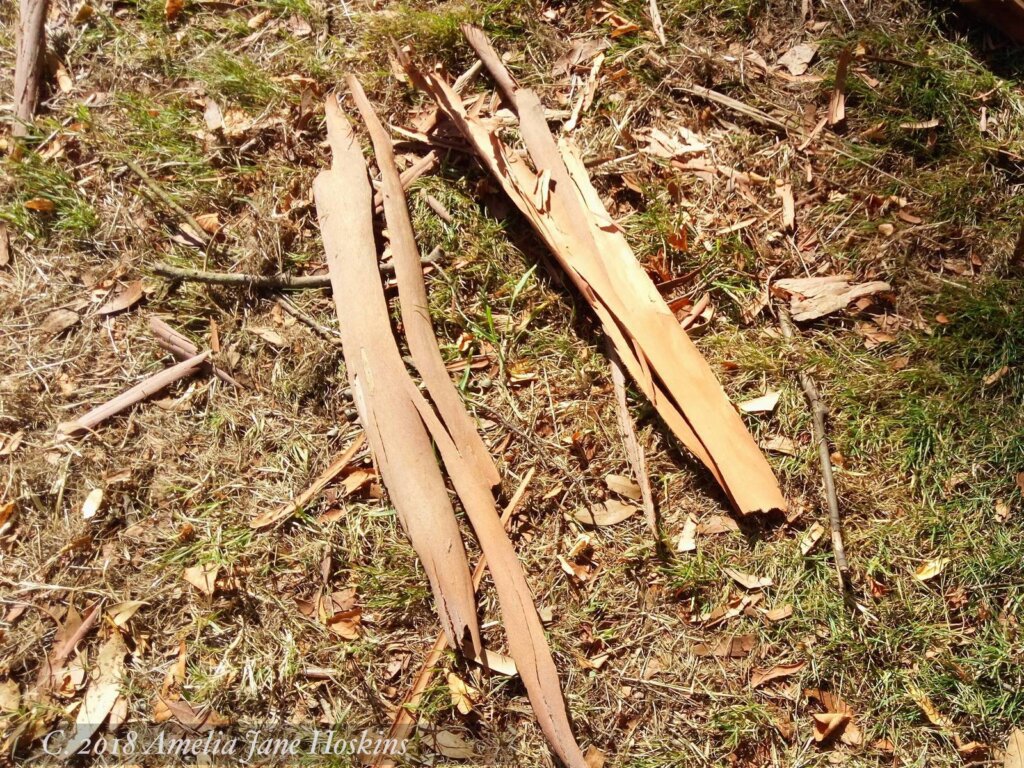
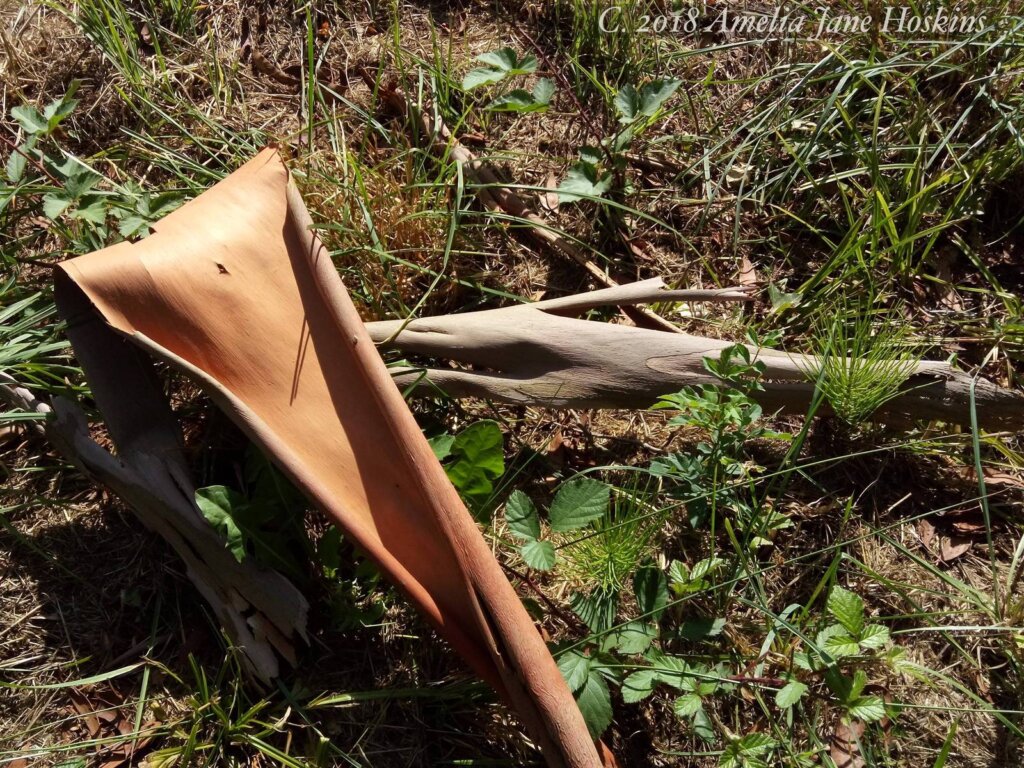
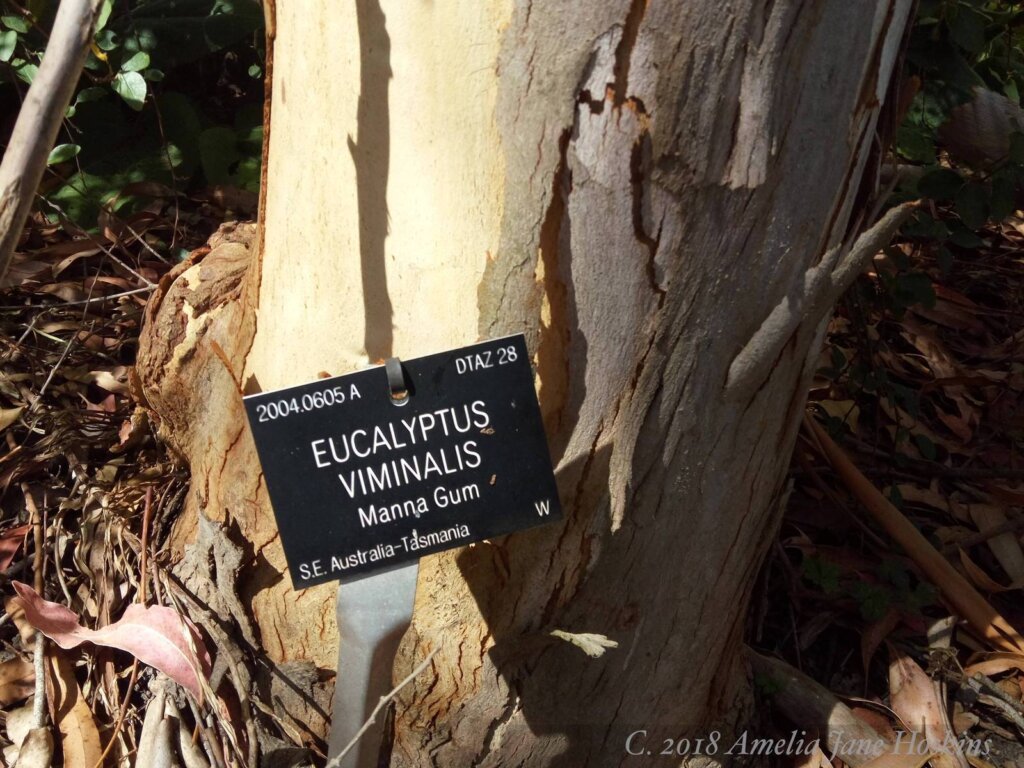
The bark falls off the trees ready for easy collection. I collected this bark from 2 trees; Eucalyptus Vminalis, Manna Gum, and Eucalyptus Archeri, Alpine Cider Gum (Tasmania), from Hillier Arboretum, Hampshire, UK. Bark unfurls, dried, off the trees' trunks.
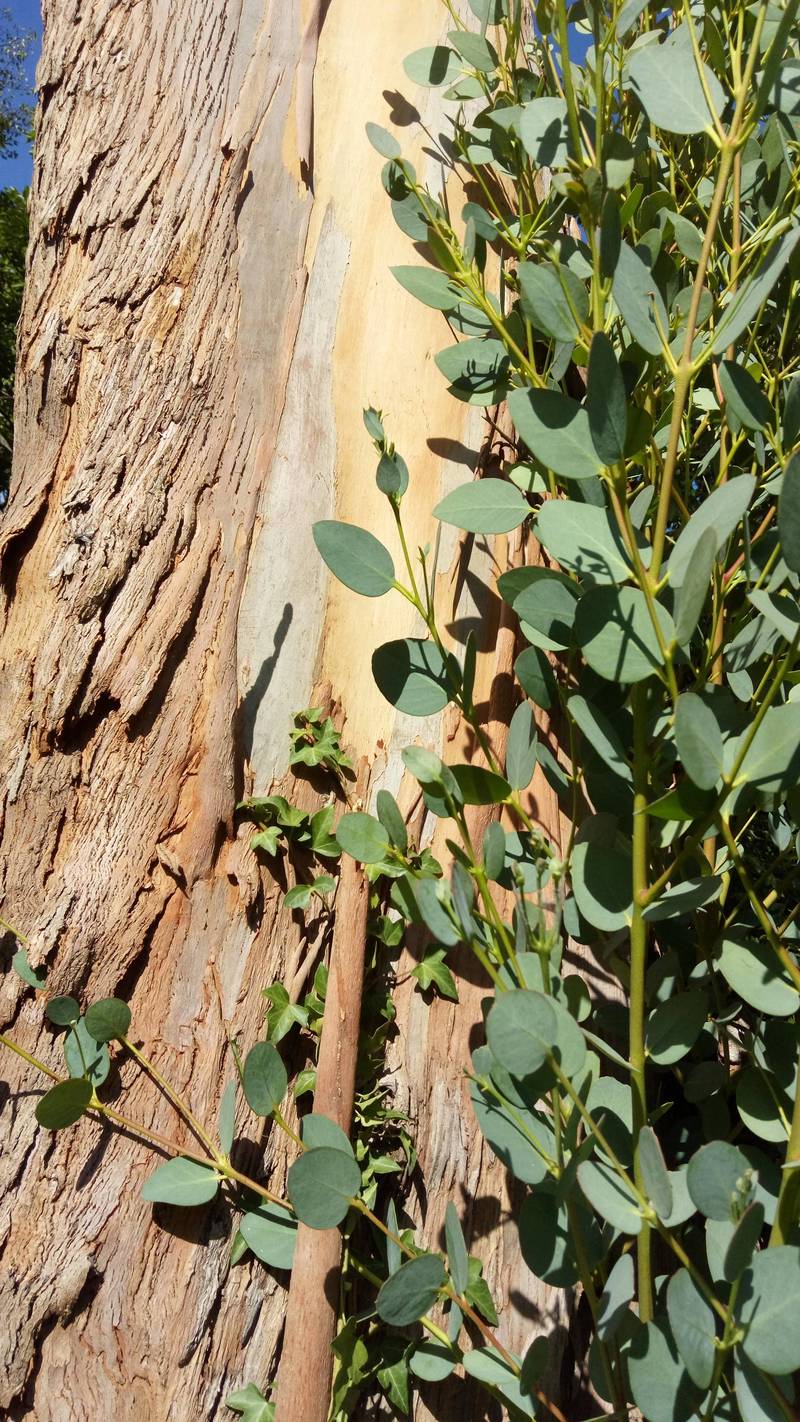
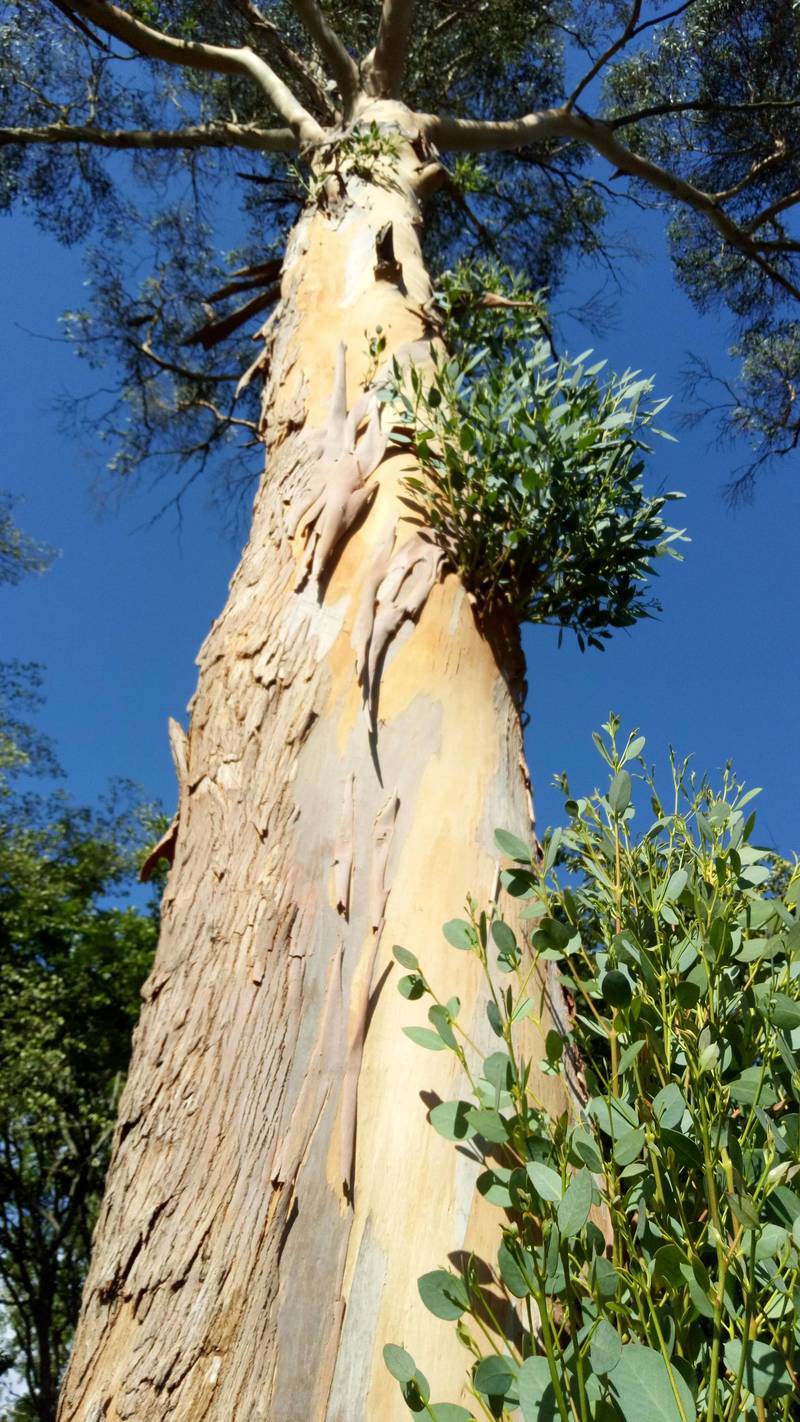
Dye Bath Preparation
Break up bark and leave to soak for a day or overnight. I added 3 leaves to ensure a colour result (as dye instruction books use leaves for strong result). I heated to boil, then simmered for 1hr to 1hr 30mins. Remove bark and put silk in pot. (I pre-mordanted the silk by soaking in water with alum in a bowl overnight; although not necessary with Eucalyptus). It wasn't necessary to reboil and simmer the silk in the pan as it took up the dye well immediately, and quickly grew darker. (This quick take up would be good for fine woollen cloth dying, where boiling can damage fabric).
After about an hour of soaking, frequently moving around, I heated it for about 10 mins and again left it to cool soaking.Silk absorbs bark dye very well, and quickly. I left it in cold dye bath for 1 hr then simmered the pot for 10 mins.Lace fabric on fist placing in dye bath (content unknown; likely cotton/polyester mix.)It rapidly takes up the dye, although it was not pre-mordanted, like the silk was.
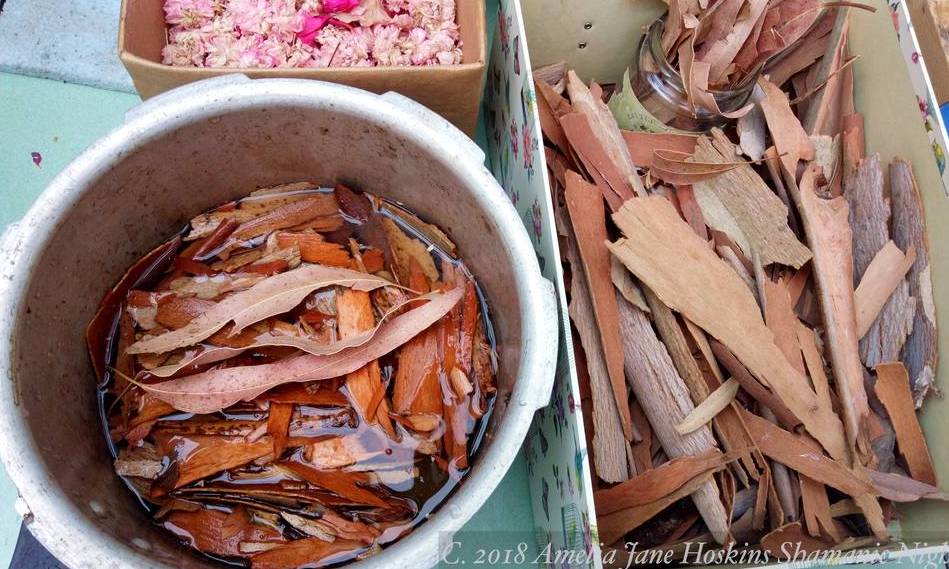
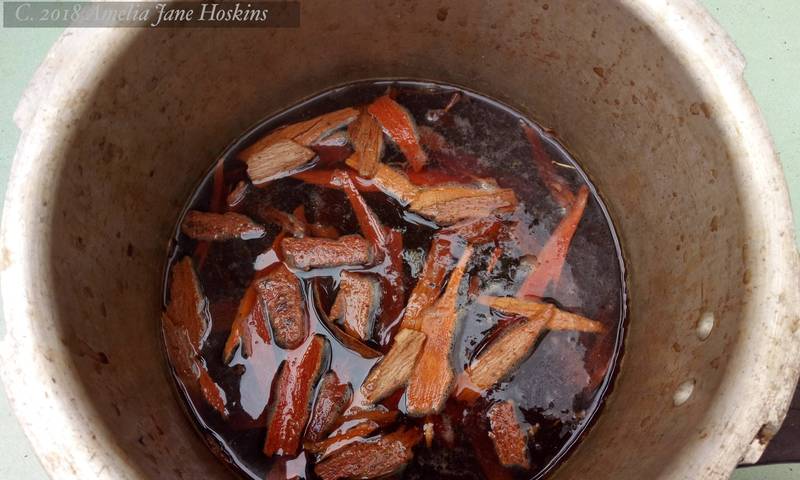
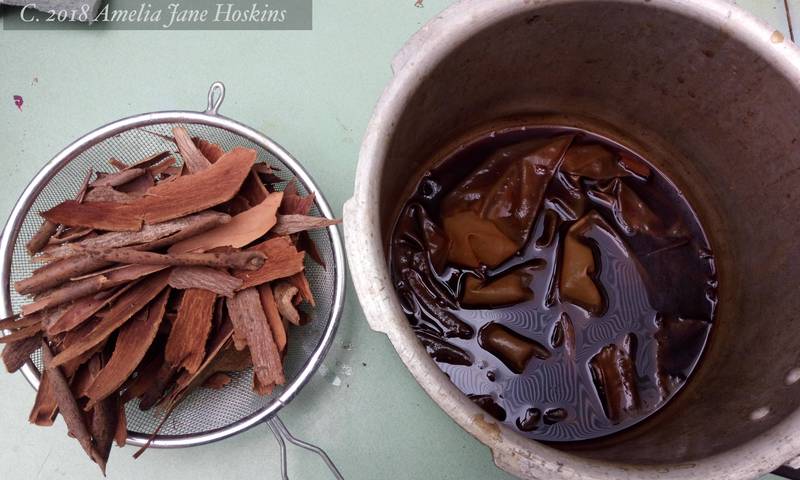
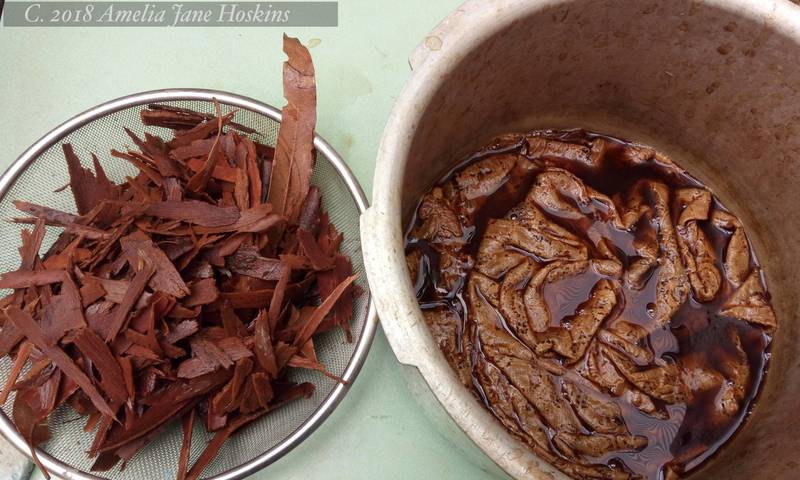
Final colour is a rich gold: silk looks very bright in sunlight; a deeper old gold tone indoors. Could be deeper if soaked longer
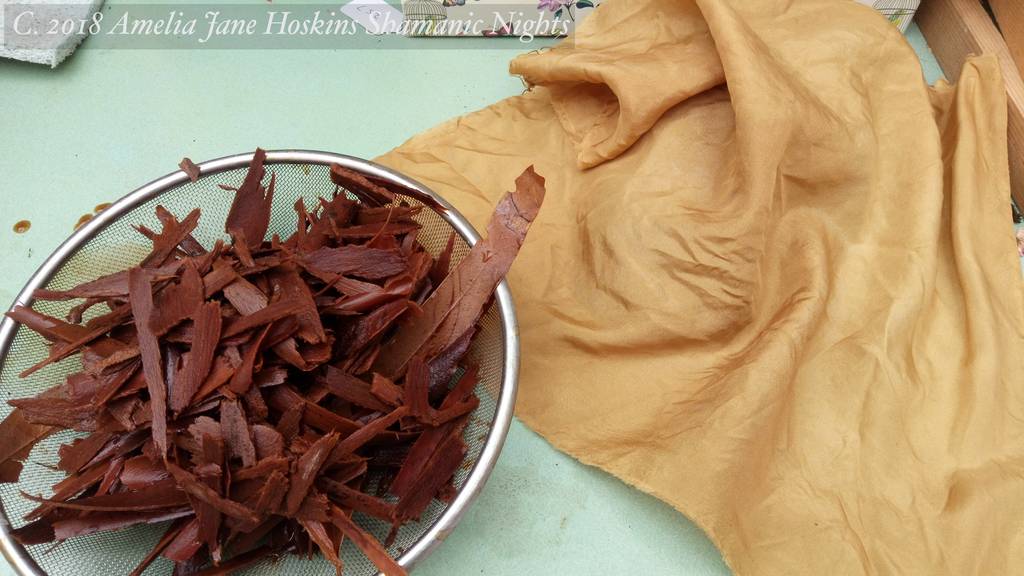
Seed designs steamed into dyed silk. Darker left silk was soaked in rusty nails to make more brownish.
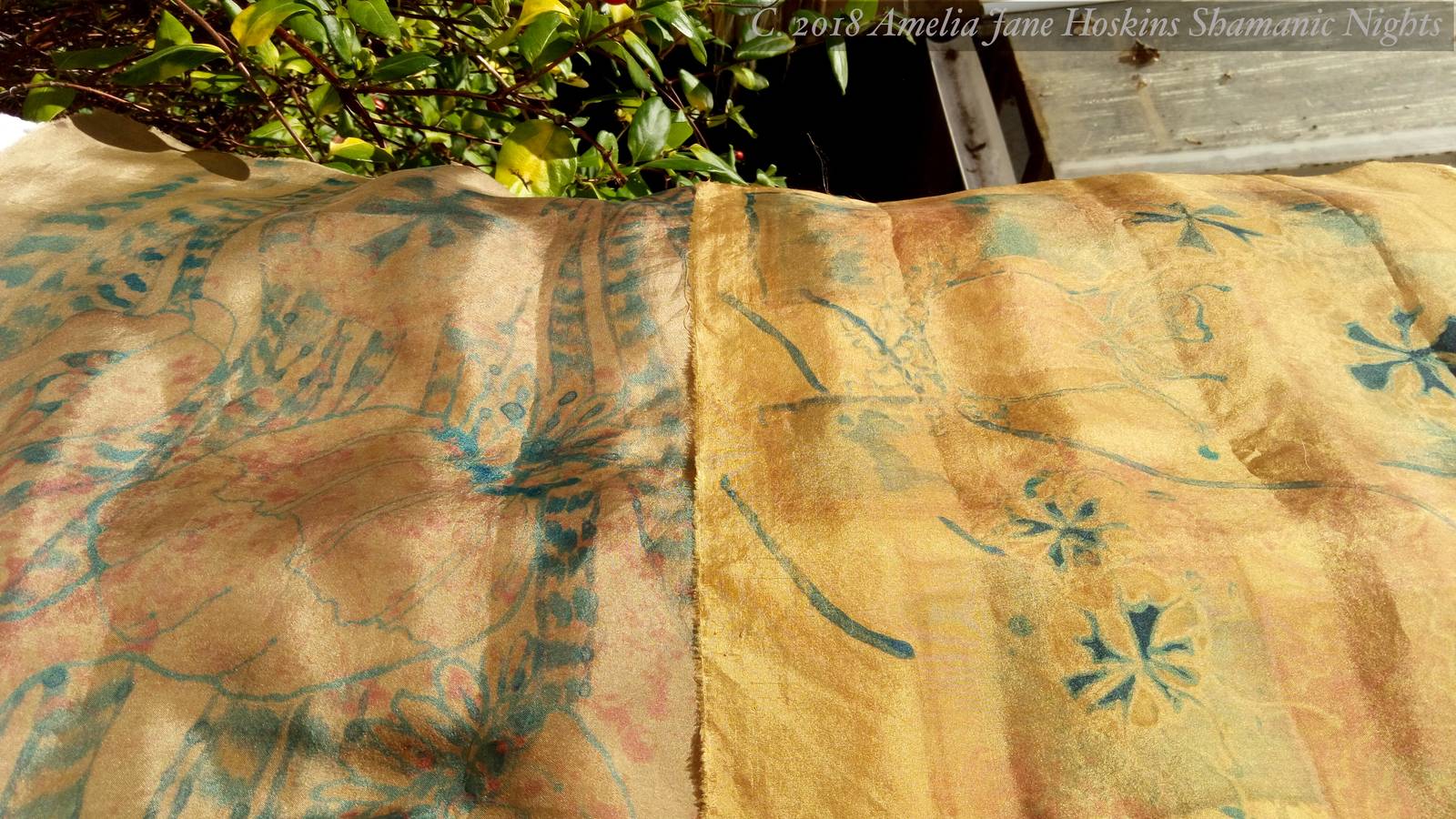
Practice piece painting over eucalyptus dyed silk. Discharge (bleaching paste) did not work through eucalyptus dye - interesting! Seed heads to be repainted darker, for contrast. Outlines (blue lines) are drawn with acid dye mixed with gutta resist paste, using applicator bottle with nozzle. Background texture in maroon was created with collograph printing: Seeds flattened and glued to cardboard, then used as a print stamp underneath silk, pressed from upper surface. (Details to be added)
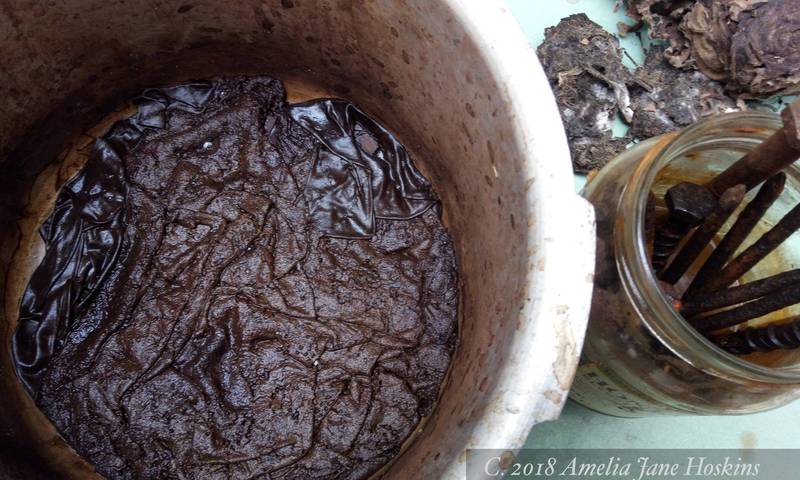
Adding iron
All dyebaths can give a darker secondary colour by addition of rusty nail water. (iron). I usually find a mixed fibre lace or cotton lace to soak up this remaining dye.
A jar of large nails can be topped up with water to give a regular supply of rust colour.
* * * * * * * * * * * * * * * * * * * * * * * *
How the dyed silk was used in two garments: As contrasting colour for collar, patches, and applique together with blue-white theme
Eucalyptus dyed silk with coordinating fabrics to make up
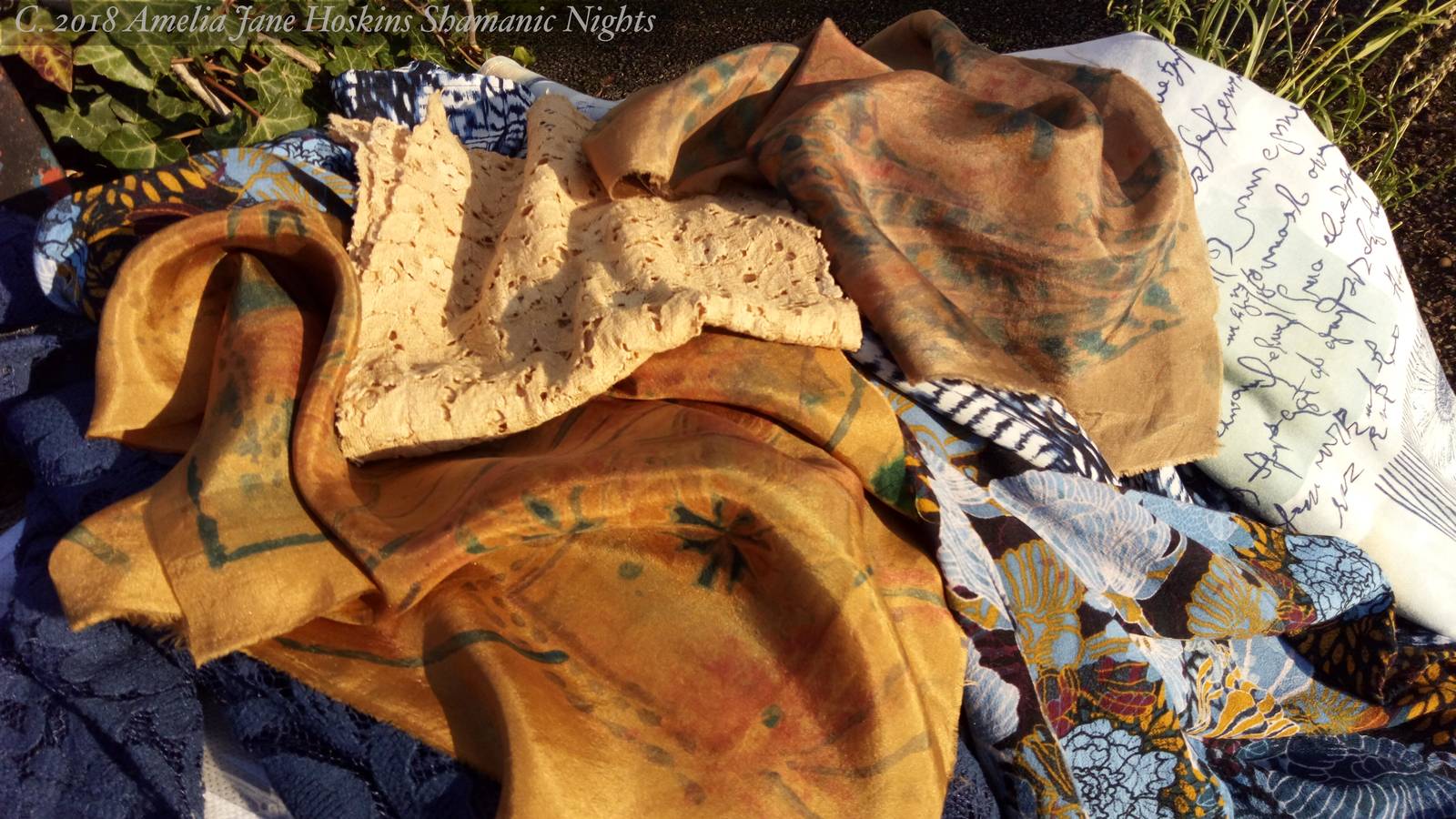
Lace dyed with same dyebath. Mixed fibres produces lighter gold.
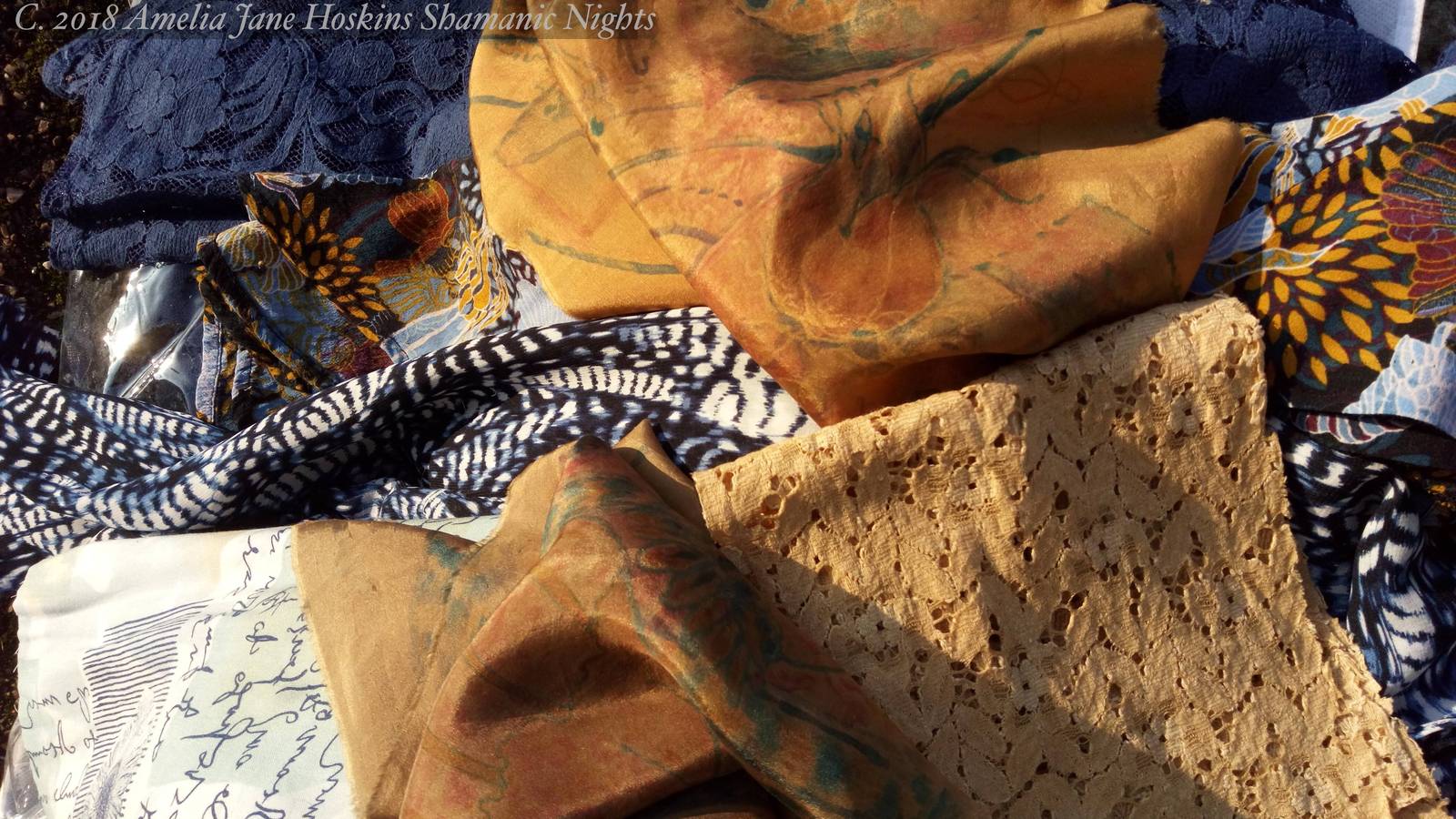
Eucalyptus dyed lace and silk used in applique of Nigella Sativa seed pod.
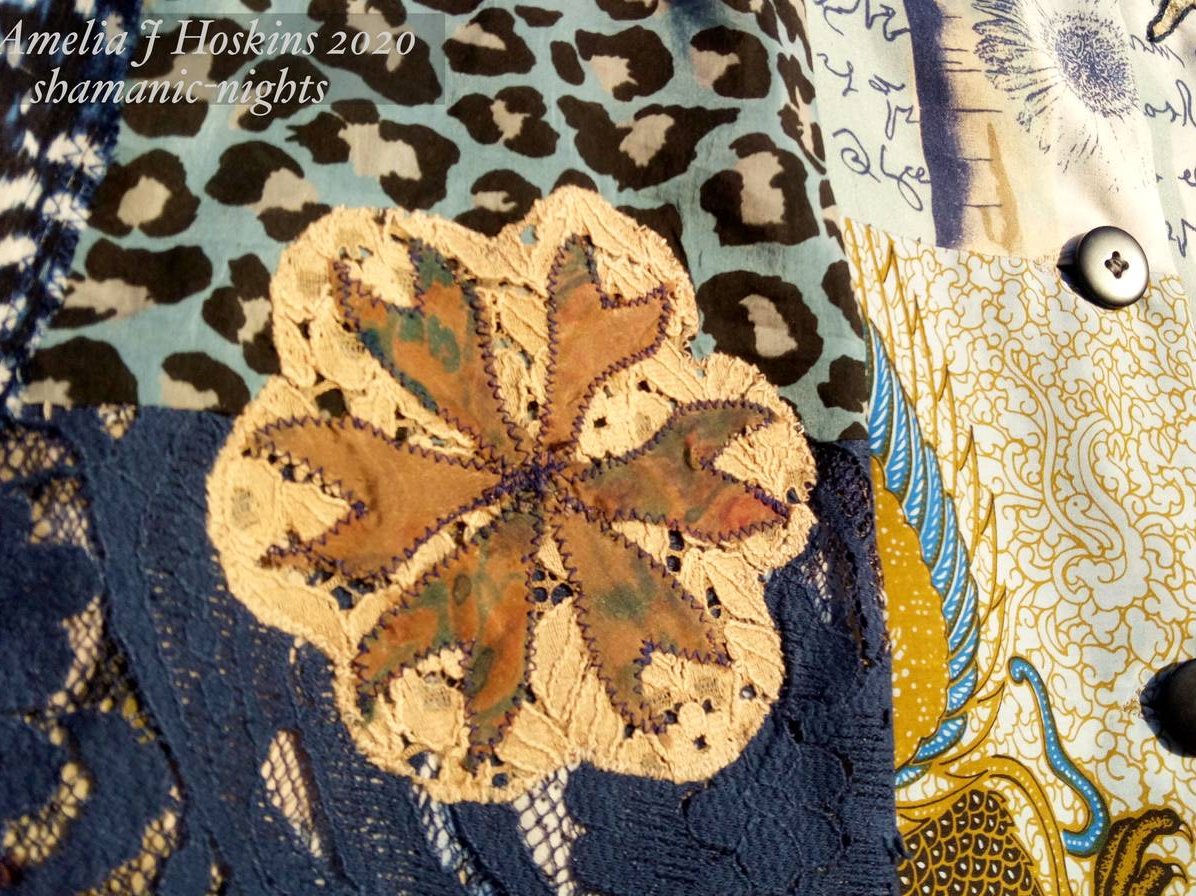
- Kimono dress 'TASMANIAN BLUES' - Eucalyptus dyed silk used for collar and appliques and in lower patches. Upper left seed pod applique is darker lace dyed with iron addition.
- Loose frock top 'NIGELLA BLUES' with silk and lace applique top left shoulder. See them HERE
Available in UK: Contact amelia-jane-hoskins@protonmail.com for details, as is not yet in online shop

